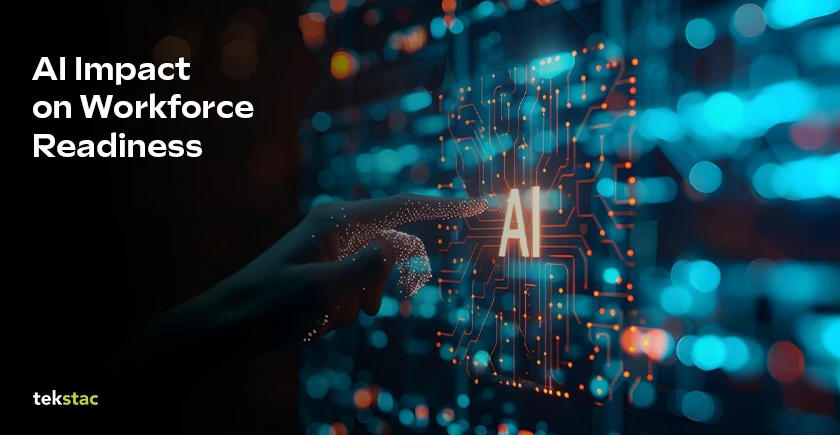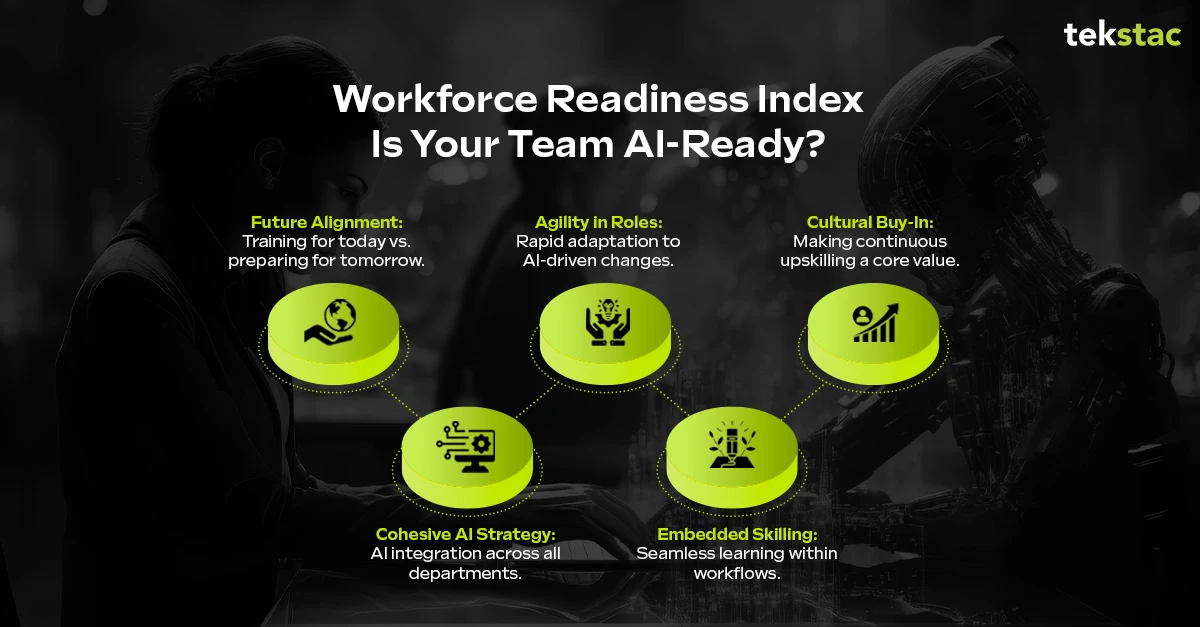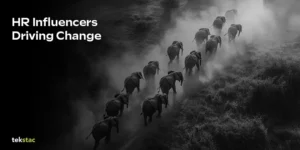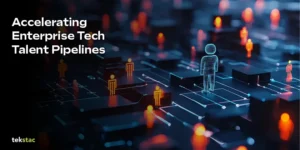The Workforce Readiness Gap: Why Technology Alone Won’t Save You
March 18, 2025

Generative AI has rewritten the rules of competition. It’s no longer about whether you have the technology; it’s about whether you have teams that can use it effectively. Any company can buy AI tools, but not every company can be good at workforce capability building that elevates those tools into real business advantages. To address this workforce readiness gap, companies have to align employees with AI’s transformative capabilities and intensify their focus on upskilling and reskilling initiatives.
Why Is Workforce Readiness Key to Closing AI-Driven Skill Gaps?
But reacting to skill gaps after they appear just isn’t good enough anymore. In an environment where insights and automation can shift overnight, you need a predictive approach to skilling—one that equips your teams for today’s tasks and tomorrow’s unknowns. Businesses that get this right will lead in innovation; those that don’t will watch from the sidelines.
Why Is Reactive Skilling No Longer Enough in the AI Era?
For many years, skilling was a catch-up game: identify a gap, send employees to training, and hope they come back ready. But when AI can alter entire value chains at record speed, this model falls short.
Take, for example, a corporate L&D team that rolls out an AI-powered learning platform to personalize employee development. If managers and employees don’t know how to leverage it and how to interpret skill recommendations, track progress, or apply insights on the job, the platform’s potential is wasted.
The antidote is predictive skilling: using AI in workforce development and data-driven foresight to see what capabilities will matter next and starting to build them before they’re mission-critical. In fact, PwC’s 2025 AI Jobs Barometer finds that AI-exposed roles are evolving 66% faster than others, highlighting the urgent need to proactively upskill teams for emerging demands.
How Can You Measure Workforce Readiness and AI Skilling Success?
To measure whether your workforce is future-ready, consider the following five markers. Think of them as your “survival index” in the AI era:

- Future Alignment – Are your training initiatives focused on current tasks, or are they anticipating emerging trends and technologies?
- Cohesive AI Strategy – Do teams across the organization—from HR to R&D—know how their roles contribute to your AI roadmap?
- Agility in Roles – How quickly can roles evolve when AI expands or shifts responsibilities?
- Embedded Skilling – Does learning happen naturally in the flow of work, or do employees have to shoehorn it into their schedules?
- Cultural Buy-In – Is ongoing skilling truly part of your company’s DNA, or just a buzzword?
Score low on any dimension, and you risk lagging behind companies that make skilling a constant, proactive discipline.
What Does the Shift from Static Jobs to AI-Infused Roles Mean for Employees?
In an AI-native organization, the boundaries of job roles blur. When machine-learning models provide real-time insights, employees must be ready to adapt on the fly. One consumer goods company, for instance, redefined its data analyst roles to include rapid experimentation with AI-driven product recommendations. The transformation led to more effective campaigns and faster decision-making—because teams were primed to pivot as soon as new insights surfaced.
To foster this kind of flexibility, leaders need to:
- Update job descriptions so they reflect ongoing collaboration with AI tools.
- Provide targeted, real-time training rather than relying on annual seminars.
- Make skilling part of daily workflows that extend beyond bridging the workforce readiness gap.
What Are the Key Workforce Readiness Strategies for CXOs in 2026?
- Adopt Continuous Skilling Ecosystems: Traditional courses can’t keep up with AI’s rapid evolution. Instead, invest in platforms and processes that deliver real-time, personalized learning paths.
- Focus on Collaborative AI Skills: People shouldn’t just understand AI technically; they need to integrate AI insights into problem-solving. Whether it’s marketing or supply chain management, the value comes from teams that mesh human creativity with machine-driven data.
- Prioritize Cultural Transformation: Even the smartest AI will fail if employees see it as a threat to their jobs. Make it clear that skill development is a top priority, champion it across every department, and reward those who embrace continuous learning.
What Are the Risks of Ignoring Workforce Readiness in the Age of AI?
Failing to skill up your teams isn’t just a missed opportunity—it’s a potential death sentence in today’s hyper-competitive market. Studies show that when AI projects underperform, the culprit is often a workforce that isn’t equipped to interpret and apply AI outputs effectively. You can deploy all the cutting-edge tools you want, but without AI-ready talent, your investments remain underutilized, your results underwhelming.
At the end of the day, technology alone won’t save you. The true differentiator is a workforce that knows how to harness AI in a way that drives real, measurable impact. And as AI continues to evolve, so must your approach to skilling. The question isn’t whether you need to do this; it’s whether you’ll do it fast enough to stay relevant.
FAQs on Workforce Readiness
1. What does workplace readiness mean?
Workplace readiness refers to a skilled generation of leaders who have the knowledge, skills and abilities required to carry out a series of professional tasks.
2. How do you measure workforce readiness?
Workforce readiness goes beyond skill completion rates or training hours. You can measure it across three dimensions:
- Skill Readiness: How well employees’ current skills align with emerging roles.
- Change Readiness: How quickly teams can adapt to new tools, systems, or strategies.
- Performance Readiness: How effectively employees can apply learning on the job.
3. Why is workforce readiness important for AI adoption?
Workforce readiness is crucial for AI adoption because employees need the right skills, mindset, and adaptability to effectively use AI tools and translate them into real business impact.
4. How are U.S. enterprises addressing the workforce readiness gap?
U.S. enterprises are tackling the workforce readiness gap by building AI and digital skills through targeted training and education partnerships. They’re prioritizing upskilling over replacement, using data and skill analytics to spot gaps early, and embedding AI adoption into everyday work. Many are also shifting to skills-based hiring and creating new career pathways to stay future-ready.





